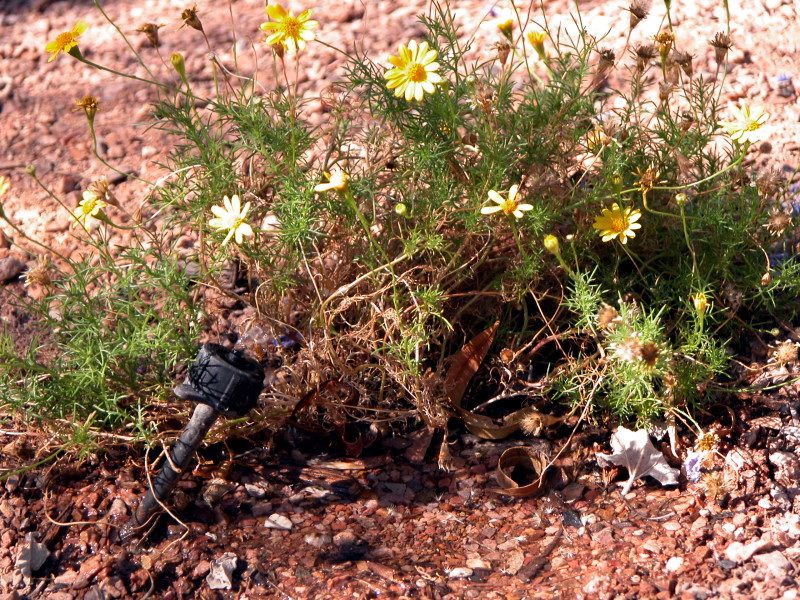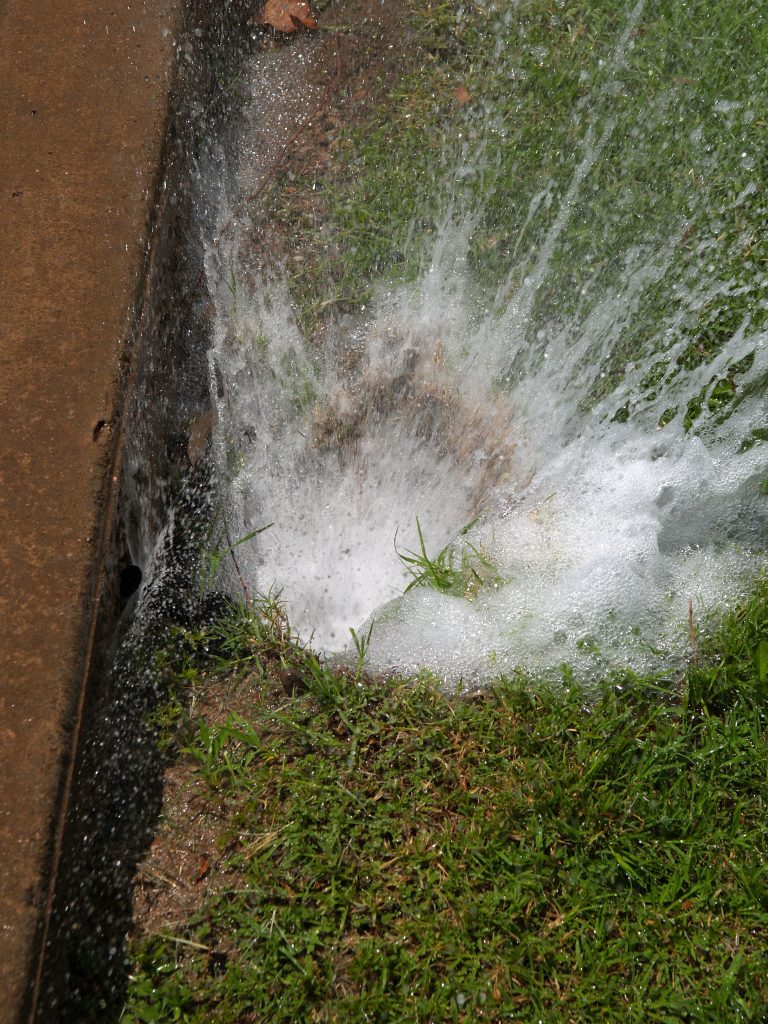Common irrigation problems can waste a lot of water and money! Did you know that over half of household water – in some cases, up to 70% is used outdoors? That means saving water in your landscape is one of the best and easiest ways to reduce your outdoor water use. July is Smart Irrigation Month, a time we like to increase public awareness of the value of water-use efficiency during summer’s peak demand. What a perfect time to shed some light on the most common irrigation problems that you might encounter in your landscape that can cause water waste and cost you money on your utility bill.
Keeping Your Sprinklers on Target
A broken sprinkler head will shoot a geyser of water high into the air wasting up to 12 gallons per minute. Generally, this problem is spotted and corrected pretty quickly. Here are some more subtle and often overlooked problems that can also occur with sprinkler systems:
- Adjustments
Make sure your sprinklers are spraying onto the grass and not on sidewalks, driveways, or the street. The nozzles can get knocked out of adjustment over time and need to be inspected regularly. - Runoff
Make sure you are not running your sprinklers too long on sloped or compacted soils. Most sprinklers apply the water faster than our soil can accept it and even a slight incline can magnify this. If you need to run your sprinklers for 30 minutes in order to apply the water the lawn requires but there is a run-off problem, break the time into shorter multiple cycles. Three ten minute cycles with an hour of soak time in between will add up to the full 30 minutes. - Obstructions
Make sure your sprinklers spray pattern is not blocked. Sometimes the shorter pop-up heads are unable to pop up high enough to spray over the grass height. This will cause all of the water to puddle around the head and the lawn will show stress where the water should be reaching. Using a taller pop-up head will fix this problem. Sometimes shrubs growing at the edge of the lawn can block the spray from a sprinkler as well. If this happens, prune the shrub away from the head.
Keeping Your Drippers Dripping

The most common problem you can have with drip emitters is clogging. When you slow the output down to rates like one gallon per hour, it doesn’t take much to clog up that little hole. If you have a single emitter that isn’t flowing, the answer is simple. Replace the emitter.
If you have a whole section of emitters not flowing there could be a couple of things going on:
- The poly tubing was damaged and allowed a lot of dirt into the system.
- There is something pinching or kinking the tubing.
- Roots may have invaded the tubing.
Sometimes emitters will put out too much water. If it is one or two of them, they have just worn out and need to be replaced. If all of your emitters have high flow rates then the problem is most likely a failed pressure regulator. There is no way to repair this, so it has to be replaced.
Keeping Your Bubblers Bubbling

Ensure that the water doesn’t overflow the basin when allowed to run for the time programmed into the controller. Adjustable bubblers can be knocked out of adjustment and dirt berms can deteriorate. You also want to make sure the basin is the right size for the plant or tree. The water-absorbing roots are at the drip line or beyond.
Bubblers don’t clog as easily as drip emitters but it can happen. Simply remove the affected bubbler from the riser and flush out the line before installing a new one.
Keeping Your Valves Valving
Valves are simply on and off switches so there are only two possible malfunctions. They either don’t turn on or they don’t turn off. There are very few parts to a valve and they can be easily repaired. Irrigation valves work both electrically and hydraulically to open and close. Some common electrical problems with valves are:
- The wiring connection at the valve has been corroded from not using waterproof connectors.
- The solenoid has failed.
- The wiring between the valve and the controller has been damaged.
The main hydraulic problems with valves are:
- There is dirt or debris inside the valve.
- The diaphragm has a hole or tear.
One of the most difficult issues to detect is a ‘seeping’ valve. This is when the valve never closes all that way and allows just a small amount of water to flow through 24/7. If undetected, this water waste really can add up AND it can kill your plants by rotting the roots when the soil never dries out. If cattails start growing in your landscape, you likely have a stuck-on valve.
Keeping Your Controller from Acting Crazy
When things start going wrong with an irrigation system, the controller is usually the first thing people blame. In most cases, it is either a programming error or the problem lies elsewhere such as the valves. Here are some common symptoms and their causes.
- The irrigation keeps starting over again after it’s finished.
This is almost always caused by extra start times being accidentally entered. Check the programming to be sure that it contains only the start time you want. Delete any unwanted start times. Duplicating information in more than one program can also cause this. Remember that a dual program controller is like two controllers in one box. If you have the same information in two programs for the same stations, you have told it to run them twice.
- The irrigation seems to run at strange times.
Again double-check to make sure that only the start times you want have been entered. Remember to check in all of the programs that your controller has available. Also, double-check that the start times are correct as to A.M. and P.M. If this seems to be OK then check to make sure the controller is displaying the proper current time and day. If this is incorrect re-set it and check on it the next day. One of the most common reasons your irrigation will run at strange times is if you’ve lost your programs and the controller has reverted to the factory default. - No matter where I turn the dial or what button I push the controller won’t respond.
With electronic type controllers, a power surge can cause them to freeze or lock-up. Don’t panic, most of the time there isn’t permanent damage. All you have to do is remove the power to the controller for a short time to allow the microprocessor to reset itself. If your controller has a backup battery feature, make sure you unplug this as well. You don’t want the processor to hold any information that may be causing the problem. Usually, one to two minutes is sufficient for this process. After that, reapply power to the controller and reprogram as usual. If the symptoms do not go away after this procedure, contact the manufacturer to locate a service center to repair the controller.
Here are some other helpful articles:
- Timing is Everything: How to Program Your Irrigation Timer
- Ways to Keep Irrigation System Efficient. We Asked Our Water Guru!
- Prevent Water Runoff — Try Cycle and Soak
The City of Mesa is one of 20 Water – Use It Wisely partners to offer water-saving advice and programs. This article originally appeared on the City of Mesa website and is being used with permission.



